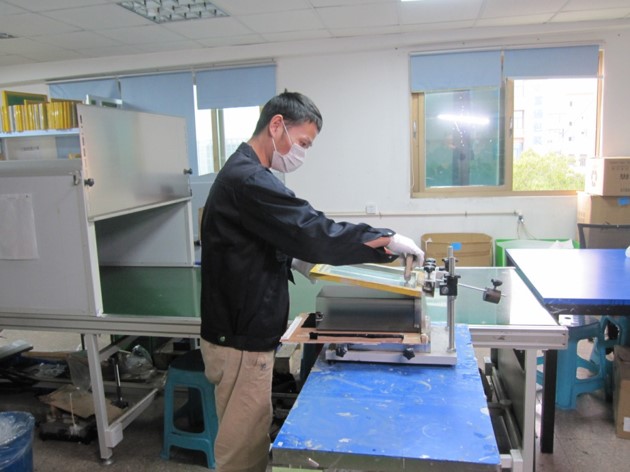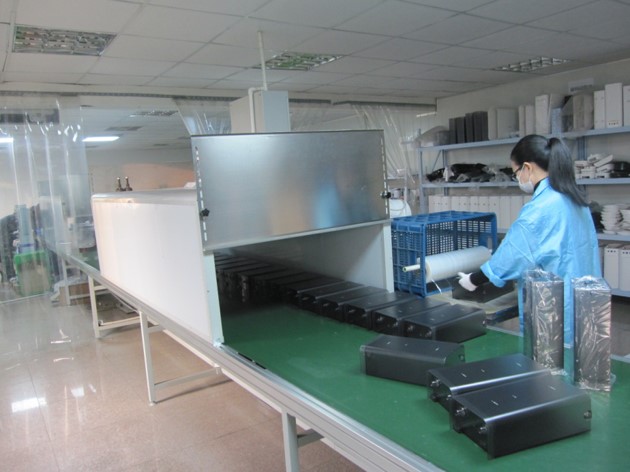Plastic surface treatment is to use physical, chemical, mechanical and other methods to process the plastic surface. The surface treatment is to meet the particularity of the product, such as corrosion resistance, wear resistance, decoration or other special requirements, called secondary processing; Secondary processing is divided into four categories: printing, laser, coating, and electroplating.
1. Printing
The printing on the plastic surface includes silk screen printing, pad printing, thermal transfer printing, hot stamping, etc.;
The principle of silk screen printing: silk screen printing is through the extrusion of the scraper, so that the ink is transferred to the substrate through the mesh of the graphic part to form the same graphic as the original.
The principle of pad printing: pad printing, also known as surface printing, is to first put ink into a gravure engraved with text or patterns, then copy the text or patterns to rubber, and then use rubber to transfer the text or patterns to plastic moldings surface, and finally the ink is cured by heat treatment or ultraviolet light irradiation.
The principle of thermal transfer printing: the pattern is printed on special release paper with sublimation ink in advance, and then the pattern is transferred to the plastic film. The paper film is transferred to the work surface. In the process of transfer or hot stamping, you only need to hot stamp the printed object once, and then various color patterns can be transferred to the plastic parts. In this way, the defective rate of plastic parts can be reduced, and the pictures are exquisite, which can be completed by ordinary hot stamping machines and thermal transfer machines. The operation is simple, the printing is exquisite, and the production cost is low. The product loss is small, the added value is high, and the process decoration is strong. High hiding power and strong adhesion. In line with green printing standards, no environmental pollution.
The principle of hot stamping printing: hot stamping is to use special foil to transfer text and patterns to the surface of plastic products at a certain temperature; the advantage is that this method does not require surface treatment, and color printing can be performed with a simple device. In addition, products with metallic luster such as gold and silver can also be printed.
2. Laser
Laser engraving, also known as laser printing technology, is a printing method that uses the high energy held by lasers to directly print text and patterns on the surface of materials. According to the different printing methods, it can be divided into scanning laser machines and shielding laser machines.
The principle of the scanning laser machine: the scanning laser machine uses two lenses equivalent to the X axis and the Y axis to control the light of the laser, and print the desired pattern or text on the substrate; the advantage is that it is good at printing small text. ; The drawing data is controlled by computer, suitable for small batch production.
The principle of shielded laser machine: When using a shielded laser machine, the pattern and text to be printed must be made on the template in advance, and then the laser will pass through the template to engrave according to its projection; the advantage is that each printing requires extremely long time. Short, suitable for mass production.
3. Coating
Coating is to apply the paint on the object to be coated to form a solid coating film. The formed protective film can prevent or delay the damage to the object from the outside world, so that the life of the material can be extended. Coating also has a decorative effect, giving the surface of the object to be painted a color, which can obtain the appearance of various effects; the coating also has special characteristics, such as anti-static, anti-corrosion, insulation and so on.
4. electroplating
In simple terms, plastic electroplating refers to the electrolytic reaction in the solution by the action of external direct current, so that a metal layer or alloy layer is deposited on the surface of the plastic. For the products coated by vacuum coating under higher vacuum degree, the substrate to be coated is installed in a vacuum evaporation machine, and the vacuum is evacuated with a vacuum pump to make the vacuum degree in the coating reach 1.3×10-2~1.3×10- 3Pa, heating the crucible to make the high-purity aluminum wire (purity 99.99%) melt and evaporate into gaseous aluminum at the temperature of 1200℃~1400℃. The gaseous aluminum particles are deposited on the surface of the moving film substrate, and after cooling and reduction, a continuous and bright metal aluminum layer is formed.


 online service
online serviceScan to wechat :
